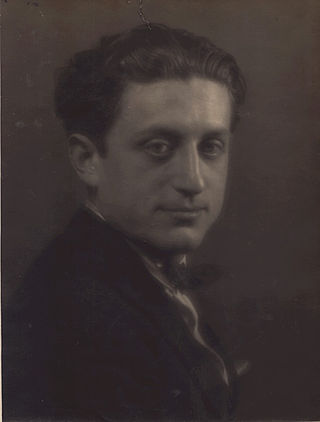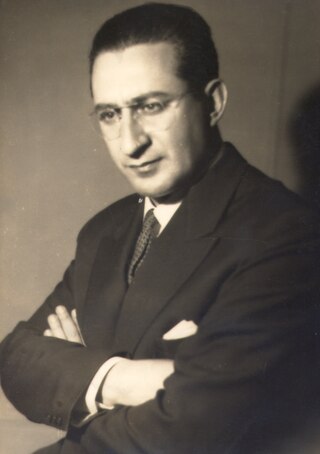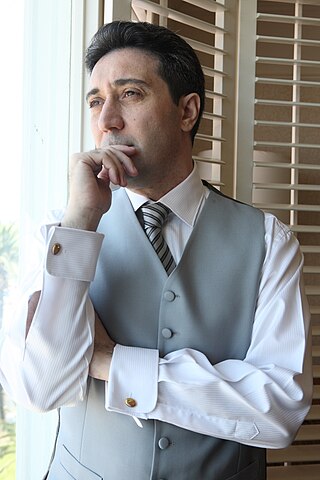Related Research Articles

Ottorino Respighi was an Italian composer, violinist, teacher, and musicologist and one of the leading Italian composers of the early 20th century. His compositions range over operas, ballets, orchestral suites, choral songs, chamber music, and transcriptions of Italian compositions of the 16th–18th centuries, but his best known and most performed works are his three orchestral tone poems which brought him international fame: Fountains of Rome (1916), Pines of Rome (1924), and Roman Festivals (1928).

Mario Pilati was an Italian composer.
Nicolas Oreste Flagello was an American composer and conductor of classical music. He was one of the last American composers to develop a distinctive mode of expression based wholly on the principles and techniques of European late romanticism.
Roman Festivals, P 157 is a tone poem in four movements for orchestra completed in 1928 by the Italian composer Ottorino Respighi. It is the last of his three tone poems about Rome, following Fountains of Rome (1916) and Pines of Rome (1924), which he referred to as a triptych. Each movement depicts a scene of celebration in ancient and contemporary Rome, specifically gladiators battling to the death, the Christian Jubilee, a harvest and hunt festival, and a festival in the Piazza Navona. Musically, the piece is the longest and most demanding of Respighi's Roman trilogy.
Fountains of Rome, P 106, is a tone poem in four movements completed in 1916 by the Italian composer Ottorino Respighi. It is the first of his three tone poems about Rome, preceding Pines of Rome (1924) and Roman Festivals (1928). Each movement depicts a setting at one of Rome's fountains at a different time of the day, specifically the Valle Giulia, Triton, Trevi, and Villa Medici. The premiere was held at the Teatro Augusteo on 11 March 1917, with Antonio Guarnieri conducting the Augusteo Orchestra. Respighi was disheartened at its initial mild reception and put away the score, until the piece was re-evaluated by the public following a February 1918 performance by conductor Arturo Toscanini which brought the composer international fame. The piece was published by Casa Ricordi in 1918.

Victor de Sabata was an Italian conductor and composer. He is widely recognized as one of the most distinguished operatic conductors of the twentieth century, especially for his Verdi, Puccini and Wagner.

Mozart Camargo Guarnieri was a Brazilian composer.
Henning Kraggerud is a Norwegian musician and composer.
Mark Grey is an American classical music composer, sound designer and sound engineer.
Olli Mustonen is a Finnish pianist, conductor, and composer.

Marcello Abbado was an Italian pianist, composer, conductor and academic teacher. His compositions include several orchestral works, two ballets, numerous pieces for solo piano, and chamber music. As a pianist, he played in major concert halls of the world. He taught composition at several conservatories, ultimately at the Giuseppe Verdi Conservatory. In 1989 he was awarded the Gold Medal for Meritorious Culture and Art by the Government of Italy.
Sergio Rendine was an Italian composer of operas, ballets, symphonies, cantatas and chamber music. He worked as a lecturer at the Conservatorio Alfredo Casella, for the Accademia Nazionale di Santa Cecilia, and for SIAE. He was artistic director of the Teatro Marrucino in Chieti from 1997 to 2007. He received awards for Alice, a "radiophonic opera". His opera Un segreto d'importanza was premiered by the Opéra de Monte-Carlo. His Missa de beatificatione in onore di Padre Pio da Pietrelcina, a mass written for the beatification of Pio of Pietrelcina, was premiered in 1999 in Vatican City, with José Carreras as a soloist. His oratorio Passio et Ressurrectio was recorded live and broadcast from the cathedral in Chieti premiere, and his two symphonies were recorded by Chandos Records.

Salvatore Di Vittorio is an Italian composer and conductor. He is music director and Conductor of the Chamber Orchestra of New York. He has been recognized by Luigi Verdi as a "lyrical musical spirit, respectful of the ancient Italian tradition… an emerging leading interpreter of the music of Ottorino Respighi".
The Violin Concerto in A major, P. 49, is the first violin concerto by the Italian composer Ottorino Respighi, which he abandoned in 1903. In 2009, Salvatore Di Vittorio completed it.
Overture Respighiana was composed by Salvatore Di Vittorio in 2008, as an homage to Ottorino Respighi. The work was written one year before Di Vittorio's completion of Respighi's rediscovered first Violin Concerto in A Major.
Marco Rogliano is an Italian violinist.
The Violin Sonata in B minor, P 110, is a sonata for violin and piano by Italian composer Ottorino Respighi, completed in 1917. It is one of Respighi's major large-scale chamber works.
Irene Abrigo is an Italian classical violinist.
Concerto in modo misolidio is a concerto for piano and orchestra, composed by the Italian composer Ottorino Respighi.
The Sei pezzi per pianoforte, P 044, is a set of six solo piano pieces written by the Italian composer Ottorino Respighi between 1903 and 1905. These predominantly salonesque pieces are eclectic, drawing influence from different musical styles and composers. The pieces have various musical forms and were composed separately and later published together between 1905 and 1907 in a set under the same title for editorial reasons; Respighi had not conceived them as a suite, and therefore did not intend to have uniformity among the pieces. The set, under Bongiovanni, became his first published work. Five of the six pieces are derived from earlier works by Respighi, and only one of them, the "Canone", has an extant manuscript.